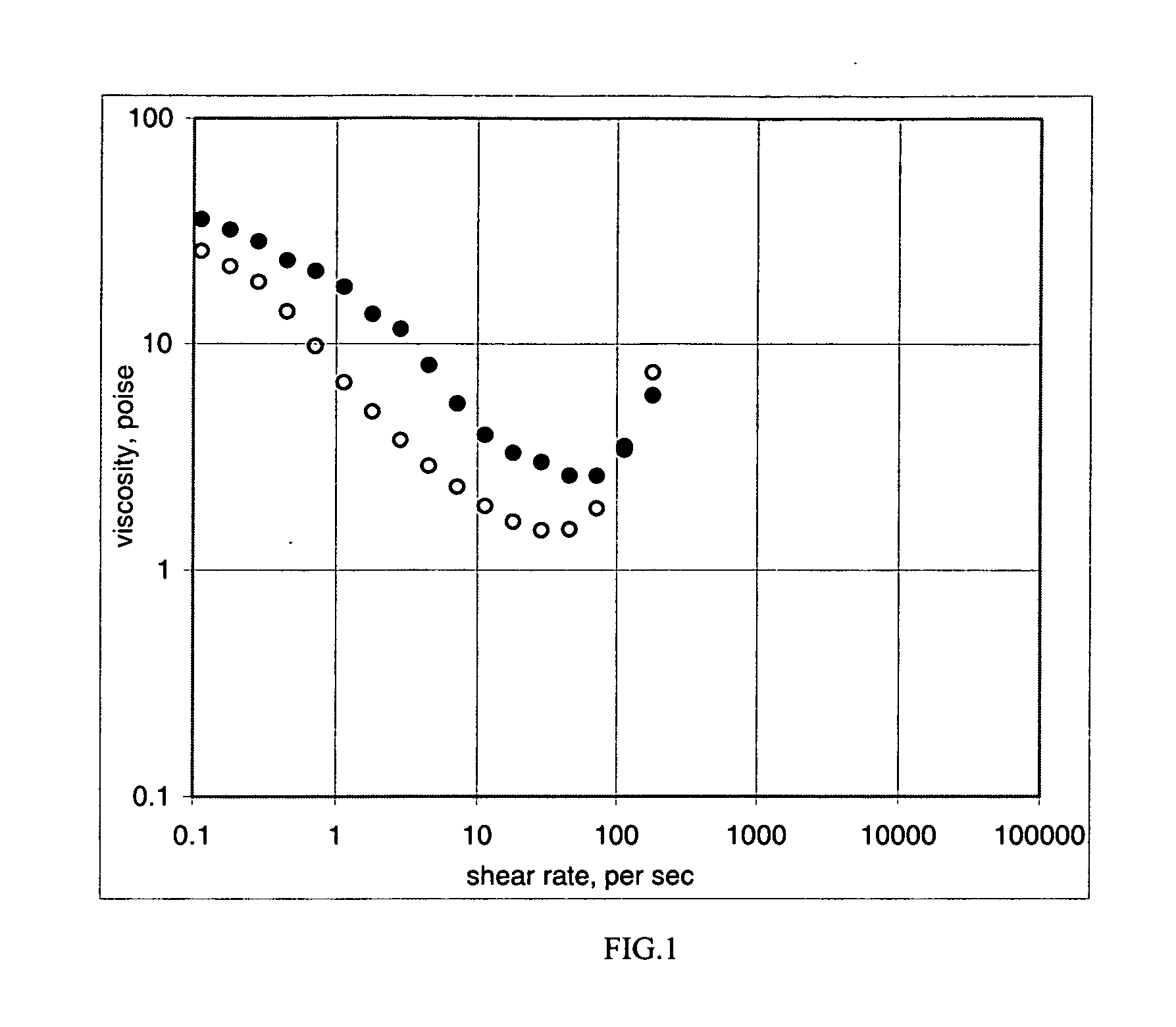Inkjet recording media
a recording media and inkjet technology, applied in the direction of printing, duplicating/marking methods, etc., can solve the problems of reducing the integrity of the coating, reducing the ink absorption, and the imaged receiver or print is not instantaneously dry to the touch, etc., to achieve excellent dry time, high solid concentration, and high ink capacity
- Summary
- Abstract
- Description
- Claims
- Application Information
AI Technical Summary
Benefits of technology
Problems solved by technology
Method used
Image
Examples
example 2
[0099] This example shows the preparation of base layer coating compositions, at 50% solids, comprising high concentrations of scalenohedral calcium carbonate, up to 95% of the total calcium carbonate. A Comparative Coating Composition A was prepared comprising 50% solids, where ALBACAR HO PCC was 100% of the solids. (ALBACAR HO is a relatively smaller size scalenohedral PCC compared to ALBACAR 5970 precipitated calcium carbonate, mentioned above.) Since ALBACAR HO scalenohedral precipitated calcium carbonate (PCC) is commercially available as a 40% solids dispersion or as a solid, Comparative Coating Composition A was prepared using the available dispersion plus additional dry powdered ALBACAR HO PCC.
[0100] Inventive Coating Compositions B and C were prepared at 50% solids using a formula similar to Comparative Coating Composition A, but in which 10% and 5% of the ALBACAR HO was replaced by an equal weight of HYDROCARB 90 GCC, respectively. The compositions were obtained by blade ...
example 3
[0123] This example showed the effect of varying the composition on absorption characteristics of an inkjet image-recording element. In this example, the following inorganic particles were used: ALBACAR HO-40 scalenohedral-shaped precipitated calcium carbonate at 40% solids, Specialty Minerals, Inc.; and HYDROCARB 90 ground calcium carbonate at 76% solids, Omya, Inc.
[0124] Base layer coating compositions B-1 to B-8 were prepared according to the following formula: 92.35 parts by weight inorganic particles, 5 parts by weight styrene-butadiene latex CP692NA (Dow Chemicals) at 49% solids, 2 parts by weight poly(vinyl alcohol) CELVOL 325 (Celanese Corporation) at 10% solids, 0.5 parts by weight CARTABOND GHF glyoxal crosslinker (Clariant Corporation) at 46% solids, 0.15 parts by weight polyacrylate COLLOID 211 (Kemira Chemicals, Inc.) at 43% solids, and water in sufficient quantity to make a final base coating solution of 40% solids. The inorganic particles (all calcium carbonate) in e...
PUM
| Property | Measurement | Unit |
|---|---|---|
| particle size | aaaaa | aaaaa |
| particle size | aaaaa | aaaaa |
| temperatures | aaaaa | aaaaa |
Abstract
Description
Claims
Application Information
 Login to View More
Login to View More - R&D
- Intellectual Property
- Life Sciences
- Materials
- Tech Scout
- Unparalleled Data Quality
- Higher Quality Content
- 60% Fewer Hallucinations
Browse by: Latest US Patents, China's latest patents, Technical Efficacy Thesaurus, Application Domain, Technology Topic, Popular Technical Reports.
© 2025 PatSnap. All rights reserved.Legal|Privacy policy|Modern Slavery Act Transparency Statement|Sitemap|About US| Contact US: help@patsnap.com

